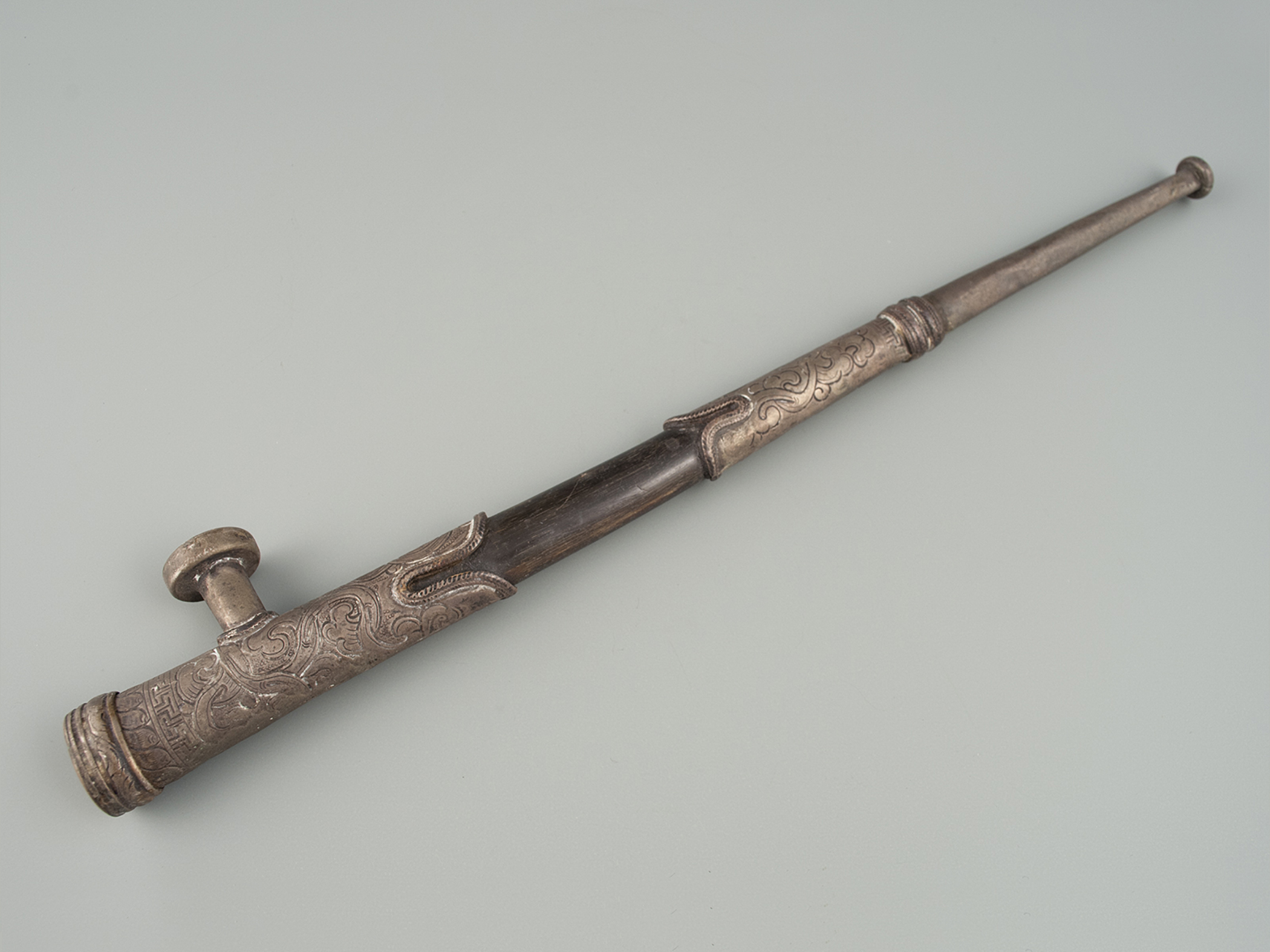Silver Bone Tibetan Pipe
Tibet, 1987

I never smoked opium while in Tibet, nor knew anyone who did. But these Sino-Tibetan pipes were once in wide use. This one was a gift from a friend in Lhasa.
The Nepal/Tibet border opened to tourism in 1985, making the long-forbidden plateau much more accessible. A couple of years later, two friends and I took a taxi northeast from Kathmandu, walked across a river to the Chinese customs post, and made our way to Lhasa. During the next several months we trekked across rough, high-altitude aeries that were simultaneously vast, spectacular, and monotonous.
During one multiday slog through a wide, rocky valley pocked with fallen gompas (Buddhist monasteries) that had been destroyed during the Cultural Revolution, the three of us tried an experiment. We had between us a few tabs of LSD, and we cut them into quarters. Every morning and afternoon we each ate one of the fragments. The mild “micro-dose” kept us in a state of benign fascination.
Late one afternoon, we rounded a bend and saw in the near distance a magnificent site: The shell of a once majestic Tibetan gompa, its broken stone walls painted red, ochre, and white, loomed on the valley floor far ahead of us. The low sun illuminated the ruin like a spotlight. I focused my Nikon, took a photograph, and walked on.
I hadn’t gone two steps when I looked at the gompa again. The light had changed dramatically. I took another picture. A minute or so later, the sun’s angle—and the light—shifted again. The scene was otherworldly, and I had to capture it.
Months later, I processed my Tibet film and loaded the slides into a projector. There were about 70 photographs of the gompa. They all looked exactly the same.
Far from feeling foolish, it made me wistful. I wanted to remember what I’d seen when I’d taken those shots. It was as if I had roused myself in the middle of the night to scrawl down a hilarious joke from a dream, only to wake in the morning and read, “Buy the dog a zipper!”
Opium dreams, LSD visions; everything we see, everyone we love, every moment we experience. We can’t hold on to a single frame of it. That’s what the Buddha taught. It’s a harsh smoke.
